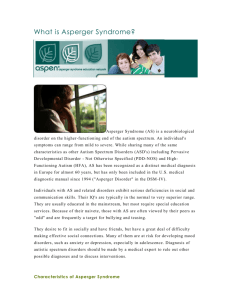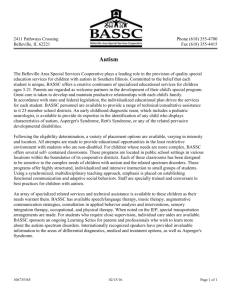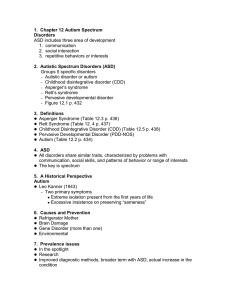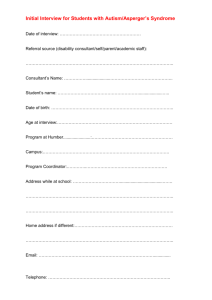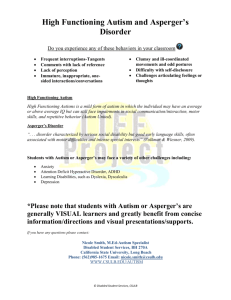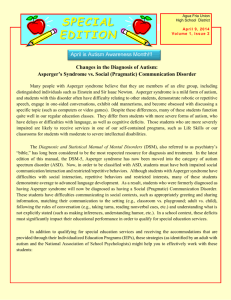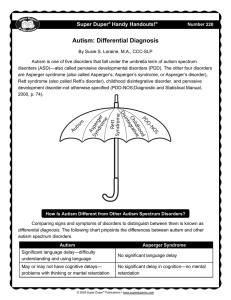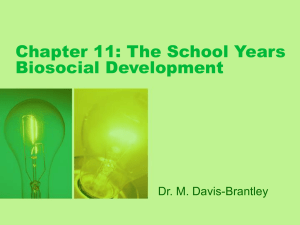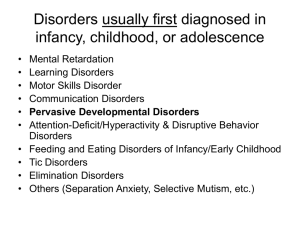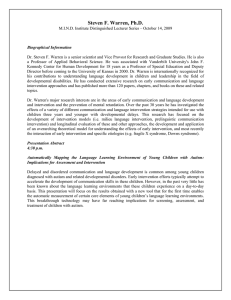Asperger`s Disorder
advertisement
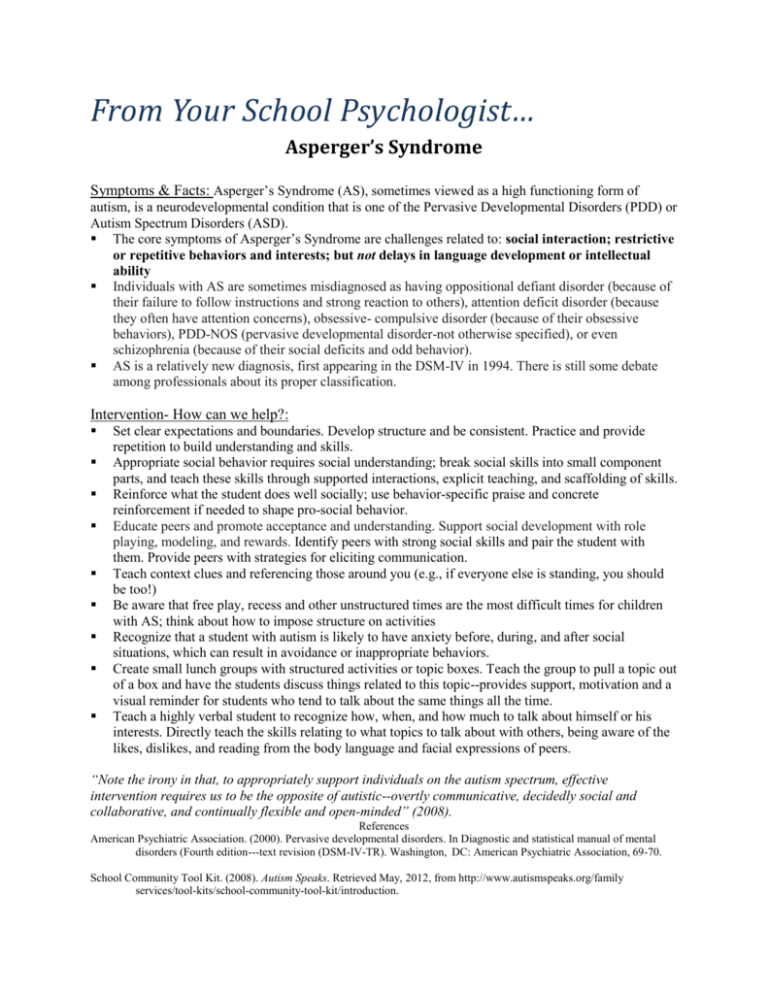
From Your School Psychologist… Asperger’s Syndrome Symptoms & Facts: Asperger’s Syndrome (AS), sometimes viewed as a high functioning form of autism, is a neurodevelopmental condition that is one of the Pervasive Developmental Disorders (PDD) or Autism Spectrum Disorders (ASD). The core symptoms of Asperger’s Syndrome are challenges related to: social interaction; restrictive or repetitive behaviors and interests; but not delays in language development or intellectual ability Individuals with AS are sometimes misdiagnosed as having oppositional defiant disorder (because of their failure to follow instructions and strong reaction to others), attention deficit disorder (because they often have attention concerns), obsessive- compulsive disorder (because of their obsessive behaviors), PDD-NOS (pervasive developmental disorder-not otherwise specified), or even schizophrenia (because of their social deficits and odd behavior). AS is a relatively new diagnosis, first appearing in the DSM-IV in 1994. There is still some debate among professionals about its proper classification. Intervention- How can we help?: Set clear expectations and boundaries. Develop structure and be consistent. Practice and provide repetition to build understanding and skills. Appropriate social behavior requires social understanding; break social skills into small component parts, and teach these skills through supported interactions, explicit teaching, and scaffolding of skills. Reinforce what the student does well socially; use behavior-specific praise and concrete reinforcement if needed to shape pro-social behavior. Educate peers and promote acceptance and understanding. Support social development with role playing, modeling, and rewards. Identify peers with strong social skills and pair the student with them. Provide peers with strategies for eliciting communication. Teach context clues and referencing those around you (e.g., if everyone else is standing, you should be too!) Be aware that free play, recess and other unstructured times are the most difficult times for children with AS; think about how to impose structure on activities Recognize that a student with autism is likely to have anxiety before, during, and after social situations, which can result in avoidance or inappropriate behaviors. Create small lunch groups with structured activities or topic boxes. Teach the group to pull a topic out of a box and have the students discuss things related to this topic--provides support, motivation and a visual reminder for students who tend to talk about the same things all the time. Teach a highly verbal student to recognize how, when, and how much to talk about himself or his interests. Directly teach the skills relating to what topics to talk about with others, being aware of the likes, dislikes, and reading from the body language and facial expressions of peers. “Note the irony in that, to appropriately support individuals on the autism spectrum, effective intervention requires us to be the opposite of autistic--overtly communicative, decidedly social and collaborative, and continually flexible and open-minded” (2008). References American Psychiatric Association. (2000). Pervasive developmental disorders. In Diagnostic and statistical manual of mental disorders (Fourth edition---text revision (DSM-IV-TR). Washington, DC: American Psychiatric Association, 69-70. School Community Tool Kit. (2008). Autism Speaks. Retrieved May, 2012, from http://www.autismspeaks.org/family services/tool-kits/school-community-tool-kit/introduction.
